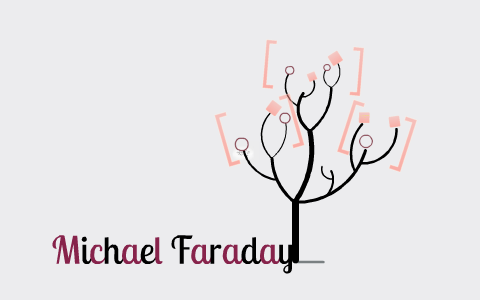
Who invented current thomas. James Faraday moved his wife and two children to London during the winter of 1790 from Outhgill in Westmorland where he had been an.
The first was immediately acknowledged and the University of Zurich awarded Einstein an additional degree.
Michael faraday contribution to atomic theory. Born on 22 September 1791 and died on 25 August 1867 Faraday was an English scientist who contributed to the fields of electromagnetism and electrochemistry. His main discoveries include those of electromagnetic induction diamagnetism and electrolysis. Working under the mentorship of Sir Humphry Davy Michael Faraday made remarkable contributions to the field of electromagnetism and electricity giving us Faradays law of induction.
Michael Faraday was the discoverer of the relationship between electricity and magnetism and that one could not exist without the other. Through his studies he came to believe that there was no such thing as the ether and he did not believe that matter was a physical substance. Rather he felt that an infinite amount of invisible lines of force pass through all of space.
When these lines intersected they would. In the 1830s Michael Faraday a British physicist made one of the most significant discoveries that led to the idea that atoms had an electrical component. Faraday placed two opposite electrodes in a solution of water containing a dissolved compound.
He observed that one of the elements of the dissolved compound accumulated on one electrode and the other element was deposited on the opposite. Faradays theories were never overlooked and forgotten his field theory was even developed about 100 years later. Michael Faraday was born in Newington Butts an area in London known as the elephant and Castle on he 22nd of September 1791.
He was raised as a member of the Sandemanian church a sect of Christianity and carried his religious. The History Of The Atomic Theory and Michael Farraday including his discovery of the relationship between electricity and magnetism. By babydogg15 Oct 24 2004 401 Words.
Michael Faraday was the discoverer of the relationship between electricity and magnetism and that one could not exist without the other. Michael Faraday 1791 1867 was an English scientist who made an immense contribution to physics and chemistry especially in the fields of electromagnetism and electrochemistry. Among his inventions are the first electric motor and the first electromagnetic generator.
His discoveries include the principles underlying electromagnetic induction. The first was immediately acknowledged and the University of Zurich awarded Einstein an additional degree. The material world and materialistic imagination formed the basis of science during Faradays life.
Born on 22 September 1791 and died on 25 August 1867 Faraday was an English scientist who contributed to the fields of electromagnetism and electrochemistry. Who invented current thomas. Michael Faraday 22 September 1791 25 August 1867 is probably best known for his discovery of electromagnetic induction his contributions to electrical engineering and electrochemistry or due to the fact that he was responsible for introducing the concept of field in physics to describe electromagnetic interaction.
I started to investigate Faradays writings while working on a post about Edward Bulwer-Lyttons An earlier version of this post said that Michael Faraday undertook a complicated experiment to prove that light was closely linked to electricity and magnetism in 1940. Maxwells own contribution to these equations is just the last term of the last equationbut the addition of that term had. Experimental Designdata collection Conclusion and contributions to atomic theory.
Michael Faraday 1791-1867 is probably best known for his discovery of electromagnetic induction his contributions to electrical engineering and electrochemistry or due to the fact that he was responsible for introducing the concept of field in physics to describe electromagnetic interaction. Henri becquerel 1896 Faraday. Michael Faraday born September 22 1791 Newington Surrey Englanddied August 25 1867 Hampton Court Surrey English physicist and chemist whose many experiments contributed greatly to the understanding of electromagnetism.
Faraday who became one of the greatest scientists of the 19th century began his career as a chemist. Michael faraday contribution to atomic theory. Published on January 26 2021 by.
Michael Faraday 1839 J. Thomson 1896 Robert Millikan 1909 Ernest Rutherford 1909 Greek philosopher English schoolteacher English chemist English physicist American physicist University of Chicago New Zealand scientist All matter around us is made of indivisible tiny particles-atomos p91 Daltons Atomic Theory. A finer taste for all your catering needs.
It was clear to Faraday however that the law of definite proportions also required some sort of atomic theory. What Faraday proposed in the 1840s was that matter was perceived where lines of force met at a particular point in space. A direct experimental outcome of this radical theory was Faradays discovery in 1845 of the magneto-optical effect and diamagnetism.
The field theory that Faraday developed. It was clear to Faraday however that the law of definite proportions also required some sort of atomic theory. What Faraday proposed in the 1840s was that matter was perceived where lines of force met at a particular point in space.
A direct experimental outcome of this radical theory was Faradays discovery in 1845 of the magneto-optical effect and diamagnetism. The field theory that Faraday. In the 1830s Michael Faraday a British physicist made one of the most significant discoveries that led to the idea that atoms had an electrical component.
Faraday placed two opposite electrodes in a solution of water containing a dissolved compound. Michael Faraday was born on 22 September 1791 in Newington Butts which is now part of the London Borough of Southwark but was then a suburban part of Surrey. His family was not well off.
His father James was a member of the Glassite sect of Christianity. James Faraday moved his wife and two children to London during the winter of 1790 from Outhgill in Westmorland where he had been an.